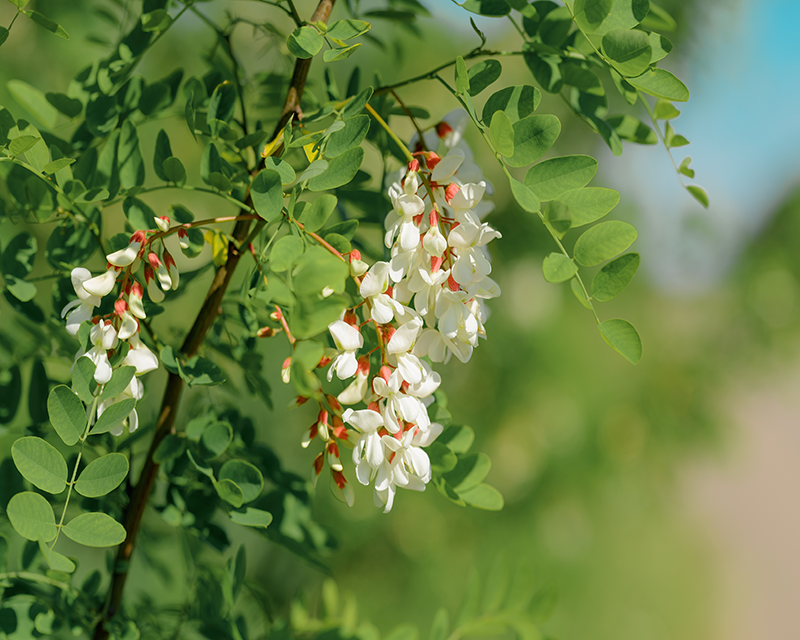Black Locust bonsai trees need full sunlight and well-draining soil. Water them regularly but avoid waterlogging.
Black Locust bonsai trees, known for their resilience and hardiness, make excellent choices for bonsai enthusiasts. These trees thrive in full sunlight and require well-draining soil to prevent root rot. Regular watering is essential, but ensure the soil doesn’t become waterlogged.
Pruning helps maintain their shape and encourages new growth. Fertilize them during the growing season to support their development. These bonsai trees are relatively low-maintenance, making them suitable for both beginners and experienced growers. With proper care, Black Locust bonsai trees can become stunning additions to any bonsai collection, offering both beauty and longevity.

Credit: www.reddit.com
Introduction To Black Locust Bonsai
The Black Locust tree is native to North America. It has been used for centuries. Early settlers valued its hardwood for tools and fences. The tree is also known for its resilience. It can grow in poor soil conditions. Today, it is a popular choice for bonsai enthusiasts.
Black Locust bonsai trees have thorny branches. They produce fragrant white flowers in spring. The leaves are small and feather-like. This makes them ideal for bonsai. The tree’s bark is deeply furrowed and dark brown. It adds character to the bonsai.
Choosing The Right Soil
Black Locust bonsai trees need well-draining soil. Use a mix of akadama, pumice, and lava rock. These materials help retain moisture and improve aeration. Sand can also be added for extra drainage.
Good drainage is crucial for Black Locust bonsai. Waterlogged soil can cause root rot. Ensure the pot has drainage holes. Use a layer of gravel at the bottom for extra drainage. This helps the roots breathe better.
Watering Techniques
Black Locust Bonsai needs water often. Check the soil every day. If the topsoil is dry, it needs water. Water in the morning or evening. Avoid watering at midday. Too much water can harm the roots. Keep the soil moist but not soggy.
Use clean water for your bonsai. Tap water is fine if not too hard. Rainwater is best for the bonsai. Avoid using water with chemicals. Filtered water can also be used. The right water helps the tree stay healthy.

Credit: www.thebonsaiseed.com
Pruning And Shaping
Pruning and shaping are essential for maintaining the aesthetic and health of a Black Locust Bonsai tree. Regular trimming encourages growth and helps achieve the desired form.
Tools Needed
Good tools are important for pruning. You will need sharp shears, a concave cutter, and a root rake. Shears help you trim the branches cleanly. The concave cutter is good for removing thick branches. A root rake helps you manage the roots. Clean your tools before use to keep your tree healthy.
Seasonal Pruning
Prune your Black Locust bonsai in spring and fall. Spring pruning helps new growth. Fall pruning keeps the tree in shape for winter. Cut back long branches to maintain the design. Remove any dead or weak branches. This helps the tree stay strong and healthy. Always make clean cuts to avoid damage.
Fertilization
Ensure the Black Locust Bonsai thrives by applying balanced fertilizer every two weeks during the growing season. Use a diluted liquid fertilizer for best results.
Best Fertilizers
Use a balanced fertilizer for black locust bonsai trees. Choose fertilizers with equal parts nitrogen, phosphorus, and potassium. Organic fertilizers like fish emulsion work well. Slow-release fertilizers are also a good choice. They provide nutrients over time. Avoid high-nitrogen fertilizers. They can cause rapid growth, which is not good for bonsai.
Application Schedule
Fertilize your black locust bonsai tree during the growing season. Start in early spring and continue until late summer. Apply fertilizer every two weeks. During the dormant season, reduce fertilization. Once a month is enough. Always follow the instructions on the fertilizer package. Over-fertilizing can harm the tree. Water the soil before applying fertilizer. This helps prevent root burn.
Pest And Disease Management
Black locust bonsai trees often face aphids, spider mites, and scale insects. Aphids are tiny and green. Spider mites leave webs on leaves. Scale insects are small, round, and brown.
Inspect your bonsai tree regularly for pests. Wash leaves with soapy water to remove insects. Use neem oil to keep pests away. Ensure your tree gets enough sunlight and air circulation.
Repotting Guidelines
Repot your Black Locust bonsai tree every 2-3 years. Spring is the best time for repotting. Check the roots. If they circle the pot, it’s time. Healthy growth means it needs more space.
Start by removing the tree from its current pot. Gently shake off the old soil. Trim any long or rotting roots. Place the tree in a new pot. Add fresh bonsai soil. Water thoroughly after repotting. Keep the tree in a shaded area for a few weeks. Monitor for signs of stress or poor health.
Seasonal Care Tips
Ensure your Black Locust Bonsai thrives by adjusting watering and sunlight exposure according to the season. Prune regularly to maintain its shape and health year-round.
Winter Protection
Black Locust Bonsai trees need extra care in winter. Keep the tree away from frost. Use a cold frame or greenhouse to protect it. Ensure the tree gets some light. Water sparingly during this season. The soil should be moist but not wet.
Summer Care
In summer, Black Locust Bonsai trees need more water. Place the tree in a shady spot to avoid direct sunlight. Mist the leaves to keep them cool. Fertilize the tree every two weeks. Use a balanced fertilizer for best growth.

Credit: www.youtube.com
Conclusion
Caring for a Black Locust Bonsai Tree can be rewarding. Follow our tips for healthy growth and vibrant foliage. Regular pruning and proper watering are essential. Ensure adequate sunlight and suitable soil conditions. With patience and dedication, your bonsai will thrive and become a beautiful addition to your collection.

